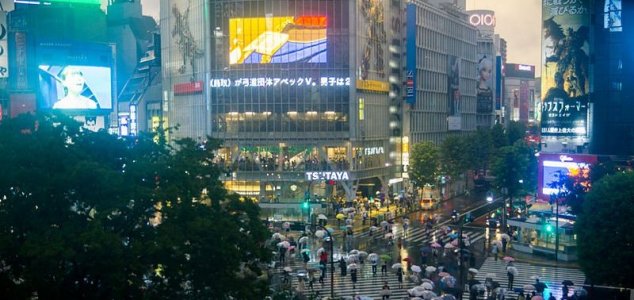Blade Runner's gritty cyberpunk future is now
Posted on Tuesday, 5 November, 2019

Some Japanese cities look a bit like Blade Runner's Los Angeles. Image Credit: CC BY 2.0 nicelife_bs
Ridley Scott's science fiction epic was set in November 2019 - so where are the flying cars and replicants ?
Based on Philip K. Dick's novel 'Do Androids Dream of Electric Sheep?', the 1982 film Blade Runner, while something of a commercial and critical flop at the time, later went on to become a cult classic and is now considered one of the greatest science fiction movies of all time.
Set in a dark, dystopian future, the film follows Harrison Ford's Rick Deckard, a burnt-out cop who is tasked with hunting down a group of rogue replicants led by Rutger Hauer's Roy Batty.
While it isn't exactly clear what a replicant is ( a press kit for the film describes them as "genetically engineered creatures composed entirely of organic substance" ), the ability to create something that looks and acts so entirely human is way beyond our current capabilities.
The movie also features other technologically advanced concepts such as flying cars and references to replicants working on colonies on distant worlds far outside of our own solar system.
At the other end of the scale, Deckard's computer - aside from it's ability to enhance photographs beyond any reasonable expectation - seems positively ancient compared to today's computers.
These conflicting predictions about how technology would advance in the coming decades reflects on the technological trends of the 1980s (as well as the 1960s when the original novel was written), with spaceflight being considered a major upcoming area of advancement and today's computers (and mobile phones) being almost unimaginable.
Other authors, such as Arthur C. Clarke who wrote '2001: A Space Odyssey' in 1968, also envisioned much more rapid advancements in manned spaceflight by the turn of the 21st Century.
Neither he nor Dick would likely have imagined that after the Apollo moon landings ended in 1972, it would be over 50 years before another human would step foot on the surface of another world.
https://youtu.be/eogpIG53Cis
https://www.unexplained-mysteries.com/news/331784/blade-runners-gritty-cyberpunk-future-is-now
Thanks to: https://www.unexplained-mysteries.com
Posted on Tuesday, 5 November, 2019

Some Japanese cities look a bit like Blade Runner's Los Angeles. Image Credit: CC BY 2.0 nicelife_bs
Ridley Scott's science fiction epic was set in November 2019 - so where are the flying cars and replicants ?
Based on Philip K. Dick's novel 'Do Androids Dream of Electric Sheep?', the 1982 film Blade Runner, while something of a commercial and critical flop at the time, later went on to become a cult classic and is now considered one of the greatest science fiction movies of all time.
Set in a dark, dystopian future, the film follows Harrison Ford's Rick Deckard, a burnt-out cop who is tasked with hunting down a group of rogue replicants led by Rutger Hauer's Roy Batty.
While it isn't exactly clear what a replicant is ( a press kit for the film describes them as "genetically engineered creatures composed entirely of organic substance" ), the ability to create something that looks and acts so entirely human is way beyond our current capabilities.
The movie also features other technologically advanced concepts such as flying cars and references to replicants working on colonies on distant worlds far outside of our own solar system.
At the other end of the scale, Deckard's computer - aside from it's ability to enhance photographs beyond any reasonable expectation - seems positively ancient compared to today's computers.
These conflicting predictions about how technology would advance in the coming decades reflects on the technological trends of the 1980s (as well as the 1960s when the original novel was written), with spaceflight being considered a major upcoming area of advancement and today's computers (and mobile phones) being almost unimaginable.
Other authors, such as Arthur C. Clarke who wrote '2001: A Space Odyssey' in 1968, also envisioned much more rapid advancements in manned spaceflight by the turn of the 21st Century.
Neither he nor Dick would likely have imagined that after the Apollo moon landings ended in 1972, it would be over 50 years before another human would step foot on the surface of another world.
https://youtu.be/eogpIG53Cis
https://www.unexplained-mysteries.com/news/331784/blade-runners-gritty-cyberpunk-future-is-now
Thanks to: https://www.unexplained-mysteries.com






 Sat Mar 23, 2024 11:33 pm by globalturbo
Sat Mar 23, 2024 11:33 pm by globalturbo

